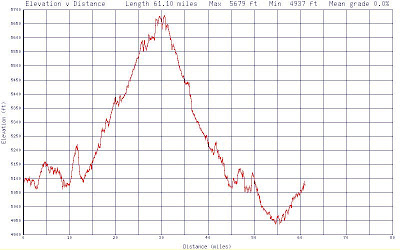 From Orion Magazine, comes a remarkable allegorical essay titled Fahrenheit 59 by Audrey Shulman:
From Orion Magazine, comes a remarkable allegorical essay titled Fahrenheit 59 by Audrey Shulman:
Yesterday afternoon, my six-year-old son practiced swimming with me. Delighted with the water and my attention, Corey stayed in for forty minutes. Despite the water’s chill, I knew if I took his temperature it would be close to 98.6° Fahrenheit. For an hour afterward he ran through the humid July heat, playing tag with his cousins, his hair damp with sweat. Still, a reading would have shown his body to be within a degree or two of 98.6.
This stability is a product of homeostasis. A holy word for biologists, homeostasis refers to an organism’s ability to maintain its ideal temperature and chemistry... Such homeostatic regulation depends on a mechanism known as negative feedback: a response that maintains a system’s balance...
It turns out that our bodies’ homeostasis can provide an analogy with which to understand the complexities of climate change—and the human response to it. Over geological time, the biosphere uses negative feedbacks in a way that maintains a stable global average temperature. When the Earth’s oceans heat up past a certain point, for example, hurricanes (which thrive only on warm water) increase their intensity, leaving a trail of stirred-up nutrients. The food creates a massive bloom of phytoplankton, which suck in enough of the greenhouse gas CO2 to start cooling the global climate.
Conversely, when temperatures fall too low, vast quantities of methane are released into the atmosphere, possibly in part because ice sheets build up, lowering sea levels and exposing coastal methane hydrates. As a greenhouse gas twenty times more powerful than CO2, the methane warms the biosphere quickly.
Did you see it? Phytoplankton as an effective means of reducing CO2? (You can read more on phytoplankton and their role in gobbling up CO2 at this nifty article by Scientific American.) Also, notice the mention that while CO2 is the most prevalent greenhouse gas, methane is 20 times more insidious?
While Schulman talks about negative feedback early on as the Earth's means of passively regulating sustainable temperatures, the essay then discusses positive feedbacks which actively and aggressively do the same thing. If the planet ever went into positive feedback mode, we wouldn't like it one bit.
Read the entire essay here.
Preventing the release of billions of tons of methane into the air due to the warming of permafrost must be a top priority. Otherwise, our planet could develop a self-protective fever in an attempt to fight its infection. And then it might not be our planet anymore.
 This Sunday, Howard and a bunch of new cycling friends (Club Hypoxia: "Oxygen or Altitude, Pick One") will climb Lookout Mountain above Golden, Colorado. It's a 5-mile 1,460-foot climb to the Buffalo Bill Museum & lookout.
This Sunday, Howard and a bunch of new cycling friends (Club Hypoxia: "Oxygen or Altitude, Pick One") will climb Lookout Mountain above Golden, Colorado. It's a 5-mile 1,460-foot climb to the Buffalo Bill Museum & lookout.












